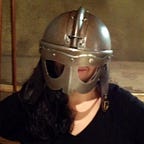How to Turn Your Old Workshop Sticky Notes into Modular Origami Masterpieces
Sticky notes are a UX Designer’s best friend. (Don’t get technical with me on this and say “Actually, it’s the users/personas/paper and pencil, et cetera”. You can have more than one best friend. Also paper and pencil are already two things. This is supposed to be a fun article.) But sometimes I can’t help but ask myself these questions — how much trash (the literal kind) do all the UX Designers in the world generate from ideation sessions? How does this affect sustainability? It seems I’m not the only one asking these questions.
The short answer is yes, sticky notes (the 3M ones at least) are recyclable. But if you’re looking for other ways to reuse them, you can turn them into Sonobe modular origami balls to spruce up your office desk.
Sticky notes are perfect because:
1. They come in different colors
2. They come in perfect squares
3. They have adhesive to reinforce the joined modules
This tutorial is for a 12-unit Sonobe ball. But you can make bigger ones from more Sonobe units. The biggest I’ve done so far is 120 units. I don’t know what the current record is, but this guy made one from 1,710 units.
To start, make 12 Sonobe units.
Step 1: Fold and unfold the sticky note in half to make a crease. (Tip: If you want to use the adhesive part of the sticky note as added reinforcement when building your ball, fold it with the adhesive against the table.)
Step 2: Fold the two edges to the center like a double door. Unfold.
Step 3: Fold the top-left and bottom-right corners to the crease you just made.
Step 4: Fold the diagonal edge to meet the same creases.
Step 5: Fold the bottom-left corner up diagonally and tuck it under the flap on the right.
Step 6: Do the same on the top half. Fold the top-right corner down diagonally and tuck into the pocket.
Step 7: Fold in half. Make sure the outside is the “plain” side.
Step 8: Fold the flaps in half and do the same on the other side.
Step 9: Make 11 more.
Here’s the exciting part — building the actual ball.
The general rule for Sonobe balls is that you’re looking for flaps and mathcing pockets — this is what holds the ball together and gives it that spiky shape.
Step 10: Insert one flap of one Sonobe unit into the pocket of another.
Step 11: Add another unit to the mix and you should have a pyramid.
Step 12: Add a Sonobe unit to each of the three remaining flaps. In this example, I added a blue unit to the green flap, a pink unit to the blue flap, and an orange unit to the pink flap.
Step 13: Add another Sonobe unit to connect the flaps from the two sides. This should start to turn into that ball shape.
In this example, I used a pink Sonobe to connect the orange and green flaps. Then I tucked the pink flap into the blue pocket to secure it. Do the same on the two other sides.
Step 14: It should now look like a bowl with three flaps sticking out, enough for your three remaining modules.
Step 15: Add the three remaining modules and tuck them into each other to secure. Congratulations. You now have a 12-unit Sonobe ball… aka “workshop output”.
More projects: Make a few more, put a string through it and create a garland or a wall hang. Why not both?
